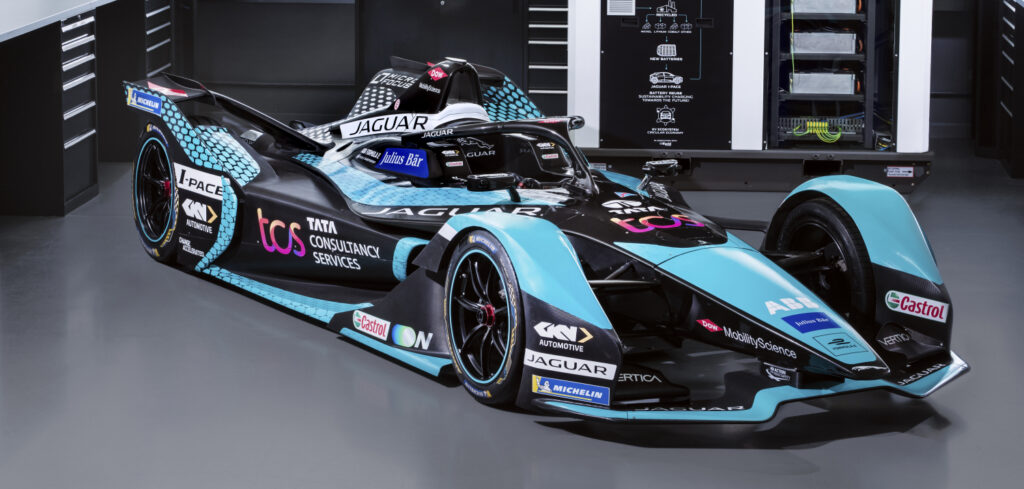Jaguar Land Rover has partnered with energy sector specialist Pramac to develop a portable zero-emission energy storage unit that utilizes second-life Jaguar I-Pace batteries. The first use of the units has been to power the company’s Formula E team’s trackside data center and provide auxiliary power to the pit garage.
Pramac’s technology – called the Off Grid Battery Energy Storage System (ESS) and featuring lithium-ion cells from Jaguar I-Pace batteries, taken from prototype and engineering test vehicles – supplies zero-emission power where access to the mains supply is limited or unavailable.
The system has a capacity of up to 125kWh – with Pramac directly reusing up to 85% of each vehicle battery supplied by JLR, including modules and wiring. The remaining materials are recycled back into the supply chain.
Charged from solar panels, each unit is a self-contained solution that consists of a battery system linked to a bi-directional converter and the associated control management systems. They are also fitted with Type 2 Electric Vehicle (EV) charge connections with dynamic control, rated at up to 22kW AC.
During pre-season Formula E testing in the UK and Spain, the units were used to power the team’s trackside infrastructure. François Dossa, executive director for strategy and sustainability at JLR, said, “The transition to an electric future, with Jaguar becoming all-electric from 2025 and the first all-electric Land Rover model expected in 2024, is integral to our sustainability strategy through the development of a comprehensive EV ecosystem from batteries to charging. This includes our effort to enable technical and business innovations for battery reuse for second life applications.
“Our collaboration with Pramac is a proof point in such direction, showing how it’s possible to supply zero-emission power through the combination of renewables and second life batteries. Through their testing at Valencia, the Jaguar TCS Racing team have shown how we can inspire the whole ecosystem to continue to explore synergies and validate viable solutions for clean energy.”



